Meet Quetzalcoatlus – World’s Largest Flying Animal Had A Wingspan Of Up To 52 Feet (15.9 m)
Eddie Gonzales Jr. - AncientPages.com - About 100 to 66 million years ago, during the Late Cretaceous, the climate was warmer than the present. Many new species appeared on all continents, including the giant Quetzalcoatlus that lived in North America.
The Quetzalcoatlus compared to a man, car, and pterodactyl. Source Pinterest
With a wingspan reaching as much as 15.9 m (52 ft), Quetzalcoatlus is one of the largest known flying animals ever. This giant animal was named after the Mesoamerican feathered serpent god, Quetzalcoatl, who was well-known under different names in the region.
The Aztecs called him Quetzalcoatl, and the ancient Maya called him Kukulkan.
The first Quetzalcoatlus fossils were discovered in Texas, the United States, from the Maastrichtian Javelina Formation at Big Bend National Park in 1971 by Douglas A. Lawson. Later, Lawson discovered a second site where he found fragmentary skeletons of much smaller individuals.
It was how we learned about this giant flying animal's existence.
Quetzalcoatlus lived among dinosaurs, but the animal was not a dinosaur. Quetzalcoatlus was the most famous member of the azhdarchids, a family of pterosaurs, a flying reptile.
"The pterosaurs and the dinosaurs appear to have evolved on divergent paths from earlier reptilian life forms. It also seems clear that the pterosaurs did not evolve into the birds.
In this regard, the anatomy is that of the wing. In a pterosaur, the fourth finger of each forelimb was considerably elongated. It supported the front edge of a membrane that stretched from the flank of the body to the farthest tip of the finger. The other fingers were short and reptilian., with a sharp claw at the end of each one.
In a bird, the second finger is the principal strut of the wing, and in the bird, much of the wing consists of course of feathers," Wann Langston explained.
The animal is often depicted with feathers, but researchers think Quetzalcoatlus was covered with pycnofibres, hair-like fibers that differ from animal hair. When Quetzalcoatlus stood on the ground, it was as tall as a giraffe, more than five meters tall (16.4 ft), and weighed 250 kilograms.
Quetzalcoatlus soared the skies, and the animal could see many giant animals walking on our planet. Then, everything ended because about 65 million years ago, about three-quarters of Earth's plant and animal species went extinct.
This event is known as the K-T mass extinction because it occurred at the boundary between the Cretaceous (K) and Tertiary (T) periods. The dinosaurs were the most famous animals to perish, and the Quetzalcoatlus did not survive either.
Written by Eddie Gonzales Jr. - AncientPages.com - MessageToEagle.com Staff Writer
More From Ancient Pages
-
 Enigmatic Human Fossil Jawbone May Be Evidence Of An Early Homo Sapiens Presence In Europe
Evolution | May 2, 2023
Enigmatic Human Fossil Jawbone May Be Evidence Of An Early Homo Sapiens Presence In Europe
Evolution | May 2, 2023 -
 Nygrotta: Species Migration Occurred Due To Climatic Shifts Millennia Ago – Ancient DNA And Bones Show
Paleontology | Apr 5, 2024
Nygrotta: Species Migration Occurred Due To Climatic Shifts Millennia Ago – Ancient DNA And Bones Show
Paleontology | Apr 5, 2024 -
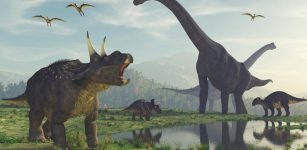 Evolution Of The Largest of The Large Dinosaurs
Evolution | May 9, 2023
Evolution Of The Largest of The Large Dinosaurs
Evolution | May 9, 2023 -
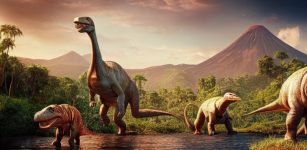 Computers Will Decide What Wiped Out The Dinosaurs
Paleontology | Oct 4, 2023
Computers Will Decide What Wiped Out The Dinosaurs
Paleontology | Oct 4, 2023 -
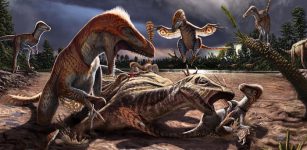 Evidence Utahraptor, World’s Largest Raptor Lived Millions Of Years Earlier Than Previously Thought
Paleontology | May 4, 2023
Evidence Utahraptor, World’s Largest Raptor Lived Millions Of Years Earlier Than Previously Thought
Paleontology | May 4, 2023 -
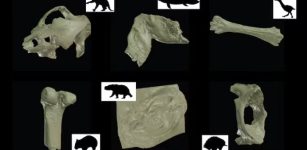 New Virtual Museum Reveals 600 Million Years Of Australian Fossils In Unprecedented 3D Detail
Fossils | Jun 2, 2023
New Virtual Museum Reveals 600 Million Years Of Australian Fossils In Unprecedented 3D Detail
Fossils | Jun 2, 2023 -
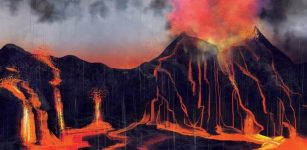 Evidence Of Dual Mass Extinctions 260 Million Years Ago – Found
Fossils | Apr 10, 2023
Evidence Of Dual Mass Extinctions 260 Million Years Ago – Found
Fossils | Apr 10, 2023 -
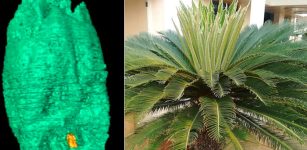 80-Million-Year-Old Fossil In California Has Re-Written Natural History Of Cycad Plants
Fossils | May 3, 2023
80-Million-Year-Old Fossil In California Has Re-Written Natural History Of Cycad Plants
Fossils | May 3, 2023 -
 Discovery Of Ancient Marine Reptile Fossil – New Evolutionary Insight
Evolution | Jun 26, 2023
Discovery Of Ancient Marine Reptile Fossil – New Evolutionary Insight
Evolution | Jun 26, 2023 -
 X-Ray Analysis Sheds New Light On Prehistoric Predator’s Last Meal
Paleontology | Apr 24, 2023
X-Ray Analysis Sheds New Light On Prehistoric Predator’s Last Meal
Paleontology | Apr 24, 2023 -
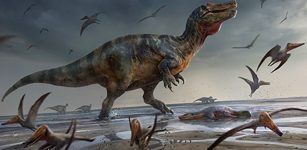 Multiple Species Of Semi-Aquatic Dinosaur May Have Roamed Pre-Historic Britain
Paleontology | Jun 14, 2023
Multiple Species Of Semi-Aquatic Dinosaur May Have Roamed Pre-Historic Britain
Paleontology | Jun 14, 2023 -
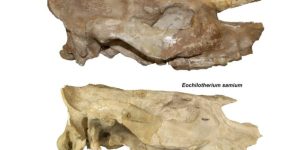 Fossilized Skulls Reveal Relatives Of Today’s Rhinos Had No Horn And Died Out 5 Million Years Ago
Fossils | Nov 2, 2023
Fossilized Skulls Reveal Relatives Of Today’s Rhinos Had No Horn And Died Out 5 Million Years Ago
Fossils | Nov 2, 2023 -
 Madagascar Hippos Were Forest Dwellers – New Study
Fossils | Jul 8, 2023
Madagascar Hippos Were Forest Dwellers – New Study
Fossils | Jul 8, 2023 -
 What If Dinosaurs Were Already In Decline When The Asteroid Struck?
Evolution | May 24, 2023
What If Dinosaurs Were Already In Decline When The Asteroid Struck?
Evolution | May 24, 2023 -
 Human Ancestors Preferred Mosaic Landscapes And High Ecosystem Diversity – New Study
Evolution | May 13, 2023
Human Ancestors Preferred Mosaic Landscapes And High Ecosystem Diversity – New Study
Evolution | May 13, 2023 -
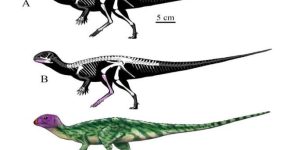 New Species Of Plant-Eating Dinosaur Identified In Thailand
Paleontology | Jul 31, 2023
New Species Of Plant-Eating Dinosaur Identified In Thailand
Paleontology | Jul 31, 2023 -
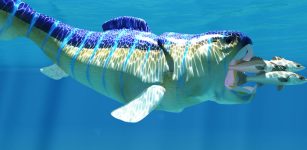 How Large Was The ‘Giant’ Dunkleosteus Terrelli – Prehistoric King Of The Oceans?
News | Apr 10, 2023
How Large Was The ‘Giant’ Dunkleosteus Terrelli – Prehistoric King Of The Oceans?
News | Apr 10, 2023 -
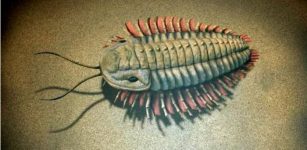 490-Million-Year-Old Trilobites Fossils Reveal Ancient Map
Fossils | Nov 21, 2023
490-Million-Year-Old Trilobites Fossils Reveal Ancient Map
Fossils | Nov 21, 2023 -
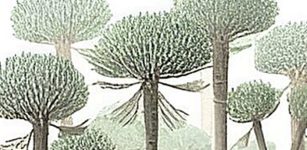 Earth’s Earliest Petrified Forest Unearthed On South-West England’s Coast
Paleontology | Mar 8, 2024
Earth’s Earliest Petrified Forest Unearthed On South-West England’s Coast
Paleontology | Mar 8, 2024 -
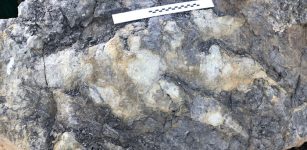 Giant Meat-Eating Dinosaur Footprint Found In Yorkshire Could Be The Largest Ever
Paleontology | Apr 12, 2023
Giant Meat-Eating Dinosaur Footprint Found In Yorkshire Could Be The Largest Ever
Paleontology | Apr 12, 2023

